It looks like you're using an Ad Blocker.
Please white-list or disable AboveTopSecret.com in your ad-blocking tool.
Thank you.
Some features of ATS will be disabled while you continue to use an ad-blocker.
share:
reply to post by OrionStars
Then show me where they calculated the distance error for the signal.
Or are you expecting us to believe that they tracked the exact location of the phone call down to the upteenth decimal?
C'mon, you can't be serious. How do you explain the later phone calls then?
Then show me where they calculated the distance error for the signal.
Or are you expecting us to believe that they tracked the exact location of the phone call down to the upteenth decimal?
C'mon, you can't be serious. How do you explain the later phone calls then?
Doesnt matter how many time you post. It wont bury the truth or sway anyone especially 6+ years later that no Boeing 757 Crashed in Shanksville.
Here is the evidence.
CaptainObvious,Mikevet and other fox news copy pasters have failed misereably to convince anyone that a plane crashed in Shanksville.
So far this is 2 or 3 oppenets of truth have compiled as evidence that a plane crashed.
Im still not swayed.
Put your finger in alcohol or jet fuel then pass it through some flame, and dont bother telling how us much it hurt and burned you.
Are you aware that you are trying to compare how a 600Mph, fully fueled comercial airplane crashing into the ground at over 600Mp/h at a 45 degree angle leaving a crater no longer than a full-size chevy car....
with a childhood experience playing with matches?
Do you think ATS members are so naive?
Now your reaching Are you making these theories up as you go along.
"The fuel Blew Away" - Like all your credibility and respect.
As far as your impact crater claim, wrong again. The crater direction and explosion damage on the upper parts of the trees, DO NOT LINE UP with the "official" direction of the plane.
Show some evidence, diagrams , graphs, anything other than just saying so. I wont be expecting anything new, convincing or even realistic. Ive seen it all.
But you also believe that planes "atomize", jet fuel "blows away" , planes "vanish", people who question authority are "nutty" "stupid" "ignorant" so what you believe is just that.
Of course not. We expect to see a plane crash and we dont.
You have failed to prove one did as we all proved one didn't .
Remember, you shouldn't have to convince anyone that a massive commercial airliner crashed, those are usually self explanatory
Why are you trying so hard to?
The pictures ( the high quality ones) show no fire in the forest at all, no burnt grass , bark, etc.(pictures earlier in the thread proves these).
Yes, as it has been discussed and agreed upon that the tree damage was consistant with a high velocity explosion and not a plane crash fuel fire for the grass between the crater all way through to the end of the burn zone. No grass, bark, or branch was BURNED by jet fuel around the the crash site anywhere.
--------------------------------------------------------------------------------
I am happy you(s) finally answered.
Congratulations. You officially destroyed the official account for anyone trying to understand Shanksville/ Flight 93 by trying so manically to uphold it.
Your imaginative twisting of facts rivals that of Arlan Specter's Magic Bullet in the Warren Report. We all know why the impossible magic bullet was invented. You invent theories on how a Boeing 757 and all its fuel 'Atomized' and"de-materialized" on impact without burning any surrounding grass around the small 10x30ft hole, when there has been not one shred of evidence from the crash investigation to support it, and in fact, actual photos of the crash site disprove you.
Captain Obvious, Mikevet and partners, you have spent 2 weeks TRYING UNSUCCESSFULLY that a planed crashed.
Plane crashes are self explanatory.
Truthers win again....lol pwned.
[edit on 9-1-2008 by IvanZana]
[edit on 9-1-2008 by IvanZana]
Here is the evidence.
CaptainObvious,Mikevet and other fox news copy pasters have failed misereably to convince anyone that a plane crashed in Shanksville.
So far this is 2 or 3 oppenets of truth have compiled as evidence that a plane crashed.
Im still not swayed.
Captain Obvious in Quotation
Think of this - strike a match and quickly pass your finger through it. Did you get burned? No. Try the same thing with a piece of paper. Or grass.
Put your finger in alcohol or jet fuel then pass it through some flame, and dont bother telling how us much it hurt and burned you.
Are you aware that you are trying to compare how a 600Mph, fully fueled comercial airplane crashing into the ground at over 600Mp/h at a 45 degree angle leaving a crater no longer than a full-size chevy car....
with a childhood experience playing with matches?
Do you think ATS members are so naive?
The fuel blew AWAY from where the photog was standing at impact, towards the trees. Remember the 40 degree impact angle? It was angled towards the trees. That's why the grass and trees on that side were burnt in that direction. Simple for most to understand that.
Now your reaching Are you making these theories up as you go along.
"The fuel Blew Away" - Like all your credibility and respect.
As far as your impact crater claim, wrong again. The crater direction and explosion damage on the upper parts of the trees, DO NOT LINE UP with the "official" direction of the plane.
Show some evidence, diagrams , graphs, anything other than just saying so. I wont be expecting anything new, convincing or even realistic. Ive seen it all.
The grass is not untouched. That's what you believe. I do not. Therefore, from my point of view, your q is invalid.
But you also believe that planes "atomize", jet fuel "blows away" , planes "vanish", people who question authority are "nutty" "stupid" "ignorant" so what you believe is just that.
The wings shattered into small pieces upon impact. Only small scattered pieces remained. Or are you suggesting that one would find intact wings?
Of course not. We expect to see a plane crash and we dont.
You have failed to prove one did as we all proved one didn't .
Remember, you shouldn't have to convince anyone that a massive commercial airliner crashed, those are usually self explanatory
Why are you trying so hard to?
The fuel was atomized and formed the fireball, some spread into the trees, catching them on fire.
The pictures ( the high quality ones) show no fire in the forest at all, no burnt grass , bark, etc.(pictures earlier in the thread proves these).
Lack of fire? Did I mention the trees? Do you see them in YOUR photos?
Yes, as it has been discussed and agreed upon that the tree damage was consistant with a high velocity explosion and not a plane crash fuel fire for the grass between the crater all way through to the end of the burn zone. No grass, bark, or branch was BURNED by jet fuel around the the crash site anywhere.
--------------------------------------------------------------------------------
I am happy you(s) finally answered.
Congratulations. You officially destroyed the official account for anyone trying to understand Shanksville/ Flight 93 by trying so manically to uphold it.
Your imaginative twisting of facts rivals that of Arlan Specter's Magic Bullet in the Warren Report. We all know why the impossible magic bullet was invented. You invent theories on how a Boeing 757 and all its fuel 'Atomized' and"de-materialized" on impact without burning any surrounding grass around the small 10x30ft hole, when there has been not one shred of evidence from the crash investigation to support it, and in fact, actual photos of the crash site disprove you.
Captain Obvious, Mikevet and partners, you have spent 2 weeks TRYING UNSUCCESSFULLY that a planed crashed.
Plane crashes are self explanatory.
Truthers win again....lol pwned.
[edit on 9-1-2008 by IvanZana]
[edit on 9-1-2008 by IvanZana]
reply to post by COOL HAND
You are telling me to make your case for you. I am not going to do that. That list is what you are using as "evidence". You have to explain how it works. It is not your opponent's responsibility to explain what you call "evidence" means.
You are telling me to make your case for you. I am not going to do that. That list is what you are using as "evidence". You have to explain how it works. It is not your opponent's responsibility to explain what you call "evidence" means.
Originally posted by COOL HAND
You are comparing the Everglades to the Pennsylvania countryside?
Are you kidding?
First of all COOL HAND you have to realize the ValueJet was a real crash. There were real pilots AND real passengers on board. Flight 93 was a scam,a hoax a PsyOp. There were no pilots and no passengers and no airplanes that crashed in the Pennsylvania countryside.
There were not enough parts to make a model airplane. There were no bodies. There was part of a turbine disk. And a seven foot section of some fuselage skin. There was allegedly an engine found several hundred yards away but no pictures.
It was a PsyOp COOL HAND. Let me respectfully suggest you get over it.
Thanks.
Remember the problems that they had with wreckage recovery? Or is that not a good enough example, because I can find more.
You are comparing the Everglades to the Pennsylvania countryside?
Are you kidding?
First of all COOL HAND you have to realize the ValueJet was a real crash. There were real pilots AND real passengers on board. Flight 93 was a scam,a hoax a PsyOp. There were no pilots and no passengers and no airplanes that crashed in the Pennsylvania countryside.
There were not enough parts to make a model airplane. There were no bodies. There was part of a turbine disk. And a seven foot section of some fuselage skin. There was allegedly an engine found several hundred yards away but no pictures.
It was a PsyOp COOL HAND. Let me respectfully suggest you get over it.
Thanks.
Originally posted by IvanZana
Truthers win again....lol pwned.
[edit on 9-1-2008 by IvanZana]
[edit on 9-1-2008 by IvanZana]
So its about winning? Not about truth
You have done nothing but to post the same thing 100 times already in the thread, ignore question thats has been ask to you, and all you care is for is to declare a win.
OMG where you guys come from?
[edit on 9-1-2008 by Bunch]
Back several pages ago, I posted a 10 point Evidence Summary. Well, here it is again.
I will ask that someone that claims to have evidence to refute this, please do so. IF you don't have evidence to refute these facts, please offer a detailed explination as to why these facts ..are not facts.
Thanks
1) The four hijackers purchased tickets under their own names and boarded the plane. One was randomly selected for and passed additional security screening. Ziad Jarrah was a licensed pilot and had recent training on professional large jet flight simulators. United flight 93 was scheduled to depart at 8:00 am, but left 42 minutes late due to airport traffic. Aboard were 33 passengers, 7 crew members, and 4 hijackers.
2) Several passengers and crew called from the plane, spoke with loved ones, described the hijackers' attack, and related their plan to try to retake the plane so that it would not be used as a suicide weapon against a populated area. All but two of these calls were made using the planes' Airfones.
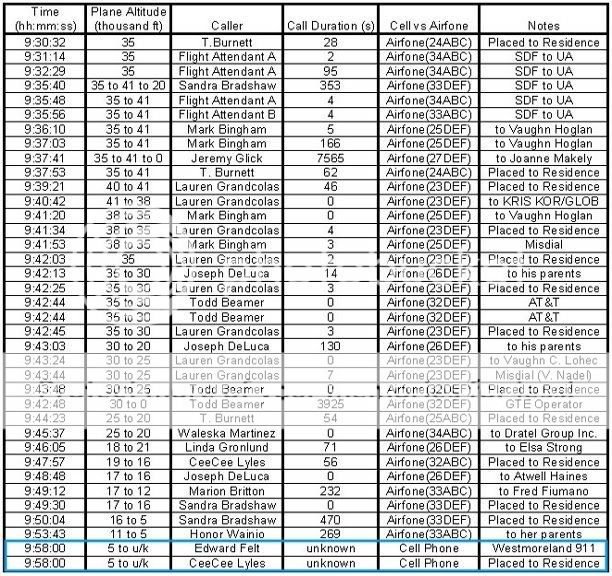
I ask that if you read but one thing in this post...make it this one:
www.tomburnettfamilyfoundation.org...
Here is a couple Interviews with Lisa Jefferson:
www.beliefnet.com...
archive.southcoasttoday.com...
Dispatcher honored for Flight 93 efforts:
www.post-gazette.com...
www.post-gazette.com...
3) The cockpit voice recorder recorded the hijackers' attack and apparent murder of the pilots and a flight attendant. Air traffic controllers heard a radio transmission by a man with an Arabic accent, warning of a bomb on board. Passengers reported that one of the hijackers had what appeared to be a bomb strapped to him.
Please see evidence presented at the Moussaoui trial exhibits and documents.
www.rcfp.org...
4) After learning about the other attacks, passengers and cabin crew attempted to retake the cockpit but were apparently unable to gain entry. The sound of their attempts was recorded on the CVR. The CVR also recorded the hijackers' decision to end the flight, followed by repeated shouts of "Allahu Akbar!" ("God is greatest.") until the plane crashed. Families of victims heard the CVR recording.
www.vaed.uscourts.gov...
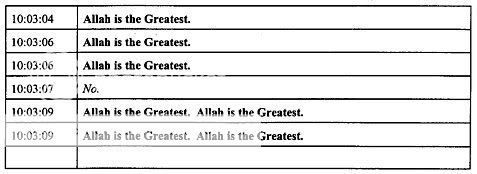
5) Flight 93 was tracked by radar until it went down.
6) Many people in Pennsylvania saw the Boeing 757, traveling at low altitude and high speed, roll to the right and plummet upside-down, nose first, towards the ground. Many people witnessed the subsequent enormous explosion and fireball. Val McClatchey photographed the mushroom cloud.
7) Hundreds of first responders (mostly volunteer firefighters) and crime scene investigators were quickly on the scene. They saw human remains, aircraft wreckage, personal effects, jet fuel, etc.
The cockpit voice recorder and flight data recorder were recovered and had usable data, all of which is consistent with the other evidence.
query.nytimes.com...
Graphed FLight Data Recording:
www.gwu.edu...
8) The remains of every victim was positively identified. Somerset County Coroner Wallace Miller personally collected many remains and made 12 identifications through fingerprints and dental records. Personal effects of most passengers and crew were recovered and returned to their families.
www.washingtonpost.com...¬Found=true
9) Hijacker identification documents and personal effects were recovered, along with the remains of four people identified as the hijackers through the process of elimination.
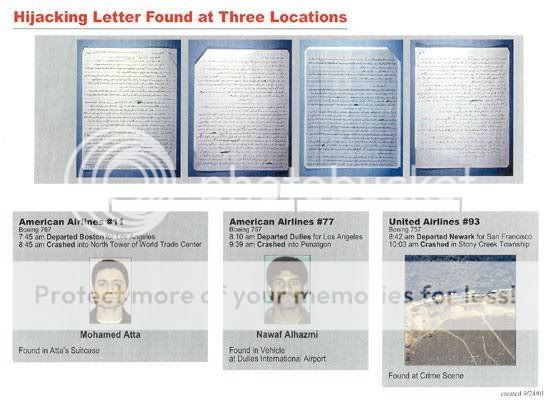
10) Nearly all of the aircraft was recovered by professional investigators and by civilians. The debris was returned to United Airlines after being examined for evidence of explosives use.
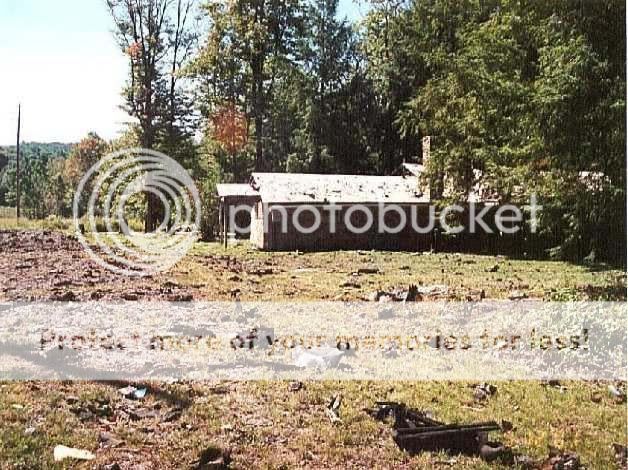
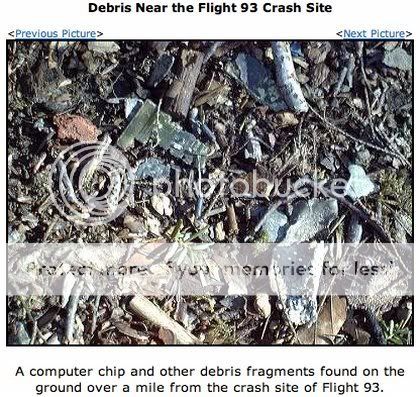
For those interested in reading Mark Roberts detailed research into the events of 911. Please click here
I will ask that someone that claims to have evidence to refute this, please do so. IF you don't have evidence to refute these facts, please offer a detailed explination as to why these facts ..are not facts.
Thanks
Flight 93: Evidence Summary: 10 Points
1) The four hijackers purchased tickets under their own names and boarded the plane. One was randomly selected for and passed additional security screening. Ziad Jarrah was a licensed pilot and had recent training on professional large jet flight simulators. United flight 93 was scheduled to depart at 8:00 am, but left 42 minutes late due to airport traffic. Aboard were 33 passengers, 7 crew members, and 4 hijackers.
2) Several passengers and crew called from the plane, spoke with loved ones, described the hijackers' attack, and related their plan to try to retake the plane so that it would not be used as a suicide weapon against a populated area. All but two of these calls were made using the planes' Airfones.

I ask that if you read but one thing in this post...make it this one:
Transcript of Tom’s last calls to Deena
6:54 a.m. Fourth cell phone call to Tom to Deena
Deena: Tom?
Tom: Hi. Anything new?
Deena: No
Tom: Where are the kids?
Deena: They’re fine. They’re sitting at the table having breakfast. They’re asking to talk to you.
Tom: Tell them I’ll talk to them later
Deena: I called your parents. They know your plane has been hijacked.
Tom: Oh…you shouldn’t have worried them. How are they doing?
Deena: They’re O.K.. Mary and Martha are with them.
Tom: Good. (a long quiet pause) We’re waiting until we’re over a rural area. We’re going to take back the airplane.
Deena: No! Sit down, be still, be quiet, and don’t draw attention to yourself! (The exact words taught to me by Delta Airlines Flight Attendant Training).
Tom: Deena! If they’re going to crash this plane into the ground, we’re going to have do something!
Deena: What about the authorities?
Tom: We can’t wait for the authorities. I don’t know what they could do anyway.
It’s up to us. I think we can do it.
Deena: What do you want me to do?
Tom: Pray, Deena, just pray.
Deena: (after a long pause) I love you.
Tom: Don’t worry, we’re going to do something.
He hung up
www.tomburnettfamilyfoundation.org...
Here is a couple Interviews with Lisa Jefferson:
'I Promised I Wouldn't Hang Up'
Lisa Jefferson, the phone supervisor who took Todd Beamer's call on Flight 93, believes God called her for a purpose.
Interview by Wendy Schuman
www.beliefnet.com...
Operator can't forget haunting cries from Flight 93
By WES SMITH, The Orlando Sentinel
Lisa D. Jefferson cannot silence the haunting cries, "the hollering and the screaming" that were the anguished background to her 13-minute conversation with United Flight 93 passenger Todd Beamer before the hijacked plane crashed in rural Pennsylvania.
archive.southcoasttoday.com...
Dispatcher honored for Flight 93 efforts:
The Westmoreland County 911 dispatcher who took a cell phone call from a frantic passenger aboard hijacked United Airlines Flight 93 says he was just doing his job when he tried to calm the man and obtain more information about what was happening aboard the jetliner.
www.post-gazette.com...
John Shaw: Received a call from Flight 93
Wednesday, September 11, 2002
John Shaw still has dreams about the phone call he answered while working as a 911 dispatcher in Westmoreland County last Sept. 11.
www.post-gazette.com...
3) The cockpit voice recorder recorded the hijackers' attack and apparent murder of the pilots and a flight attendant. Air traffic controllers heard a radio transmission by a man with an Arabic accent, warning of a bomb on board. Passengers reported that one of the hijackers had what appeared to be a bomb strapped to him.
Please see evidence presented at the Moussaoui trial exhibits and documents.
www.rcfp.org...
4) After learning about the other attacks, passengers and cabin crew attempted to retake the cockpit but were apparently unable to gain entry. The sound of their attempts was recorded on the CVR. The CVR also recorded the hijackers' decision to end the flight, followed by repeated shouts of "Allahu Akbar!" ("God is greatest.") until the plane crashed. Families of victims heard the CVR recording.
www.vaed.uscourts.gov...

5) Flight 93 was tracked by radar until it went down.
6) Many people in Pennsylvania saw the Boeing 757, traveling at low altitude and high speed, roll to the right and plummet upside-down, nose first, towards the ground. Many people witnessed the subsequent enormous explosion and fireball. Val McClatchey photographed the mushroom cloud.
7) Hundreds of first responders (mostly volunteer firefighters) and crime scene investigators were quickly on the scene. They saw human remains, aircraft wreckage, personal effects, jet fuel, etc.
The cockpit voice recorder and flight data recorder were recovered and had usable data, all of which is consistent with the other evidence.
AFTER THE ATTACKS: THE PENNSYLVANIA CRASH; Searchers Find Plane Cockpit Voice Recorder
query.nytimes.com...
Graphed FLight Data Recording:
www.gwu.edu...
8) The remains of every victim was positively identified. Somerset County Coroner Wallace Miller personally collected many remains and made 12 identifications through fingerprints and dental records. Personal effects of most passengers and crew were recovered and returned to their families.
Hundreds of searchers who climbed the hemlocks and combed the woods for weeks were able to find about 1,500 mostly scorched samples of human tissue totaling less than 600 pounds, or about 8 percent of the total.
www.washingtonpost.com...¬Found=true
9) Hijacker identification documents and personal effects were recovered, along with the remains of four people identified as the hijackers through the process of elimination.

10) Nearly all of the aircraft was recovered by professional investigators and by civilians. The debris was returned to United Airlines after being examined for evidence of explosives use.


For those interested in reading Mark Roberts detailed research into the events of 911. Please click here
reply to post by CaptainObvious
Did you look at that building and the roof in your photo presentation? For something that close to all that alleged fire and jetliner crash, the building is in pristine condition all considered. It looks like chunks of dirt on the roof, consistent with either a missile impact or a very powerful ground level explosion, having nothing to do with anything from the sky impacting the ground.
Wonder if they ever used that for residential and business trash land fill. All that decaying organic matter building up gases under the surface, like methane, hydrogen, nitrogen etc. Major gas pressure kabooms can definitely occur in landfills full of decaying organic matter.
Did you look at that building and the roof in your photo presentation? For something that close to all that alleged fire and jetliner crash, the building is in pristine condition all considered. It looks like chunks of dirt on the roof, consistent with either a missile impact or a very powerful ground level explosion, having nothing to do with anything from the sky impacting the ground.
Wonder if they ever used that for residential and business trash land fill. All that decaying organic matter building up gases under the surface, like methane, hydrogen, nitrogen etc. Major gas pressure kabooms can definitely occur in landfills full of decaying organic matter.
reply to post by OrionStars
Orion, I ask that you list 1-10 and refute each one. In regards to the small building... please note the distance from the impact point.
I await your response.
Thank you,
C.O.
(see how nice I am mods )
edit to add photos to Orions response.
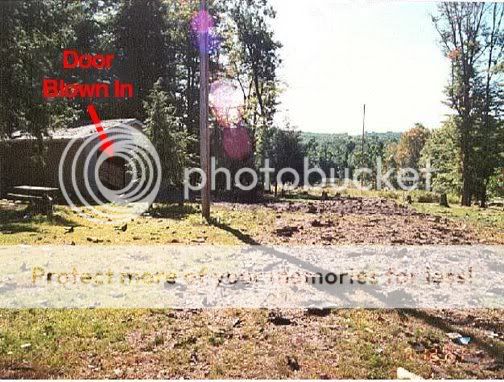
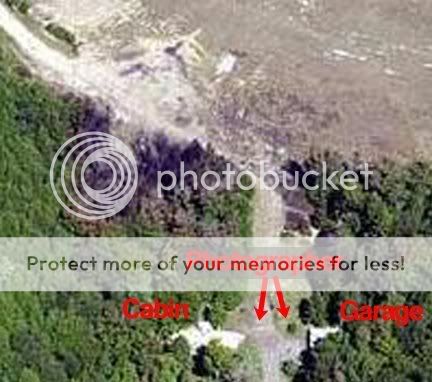
[edit on 9-1-2008 by CaptainObvious]
Orion, I ask that you list 1-10 and refute each one. In regards to the small building... please note the distance from the impact point.
I await your response.
Thank you,
C.O.
(see how nice I am mods )
edit to add photos to Orions response.


[edit on 9-1-2008 by CaptainObvious]
reply to post by CaptainObvious
Why? You will not make logical sense out of the three I did list as refuted in a prior post. Why should I waste time going further?
You did not validate your own presentation of what you label "evidence", when asked, at least a couple of times, referencing at least one piece of what you call "evidence".
You know. Those alleged phone calls you want me to explain on your "evidence". The responsibility is yours to validate not mine.
Now you have another severe problem explaining how that building, so close to an alleged raging jet fuel fire from alleged 580 mph jetliner crash, managed to come out of that in such, all considered, pristine condition. After all, alleged debris managed to find its way to the Pennsylvania Turnpike at least 10 miles away. It stands to logical reason, at least part of that debris would have severely damaged that building so close to an alleged 580 mph jetliner crash and raging jet fuel fire.
Going on tangent definitely is not helping you validate your points of argument.
Why? You will not make logical sense out of the three I did list as refuted in a prior post. Why should I waste time going further?
You did not validate your own presentation of what you label "evidence", when asked, at least a couple of times, referencing at least one piece of what you call "evidence".
You know. Those alleged phone calls you want me to explain on your "evidence". The responsibility is yours to validate not mine.
Now you have another severe problem explaining how that building, so close to an alleged raging jet fuel fire from alleged 580 mph jetliner crash, managed to come out of that in such, all considered, pristine condition. After all, alleged debris managed to find its way to the Pennsylvania Turnpike at least 10 miles away. It stands to logical reason, at least part of that debris would have severely damaged that building so close to an alleged 580 mph jetliner crash and raging jet fuel fire.
Going on tangent definitely is not helping you validate your points of argument.
reply to post by OrionStars
Orion,
What would you like as far as evidence? I gave you a list of phone calls that the Airphone company had recorded. We have statements from the family members talking about the phone calls. We have interviews from a GE operator that spoke with Todd. We have a 911 operator that spoke with a man in the bathroom.
I would like to know what it would take to convince you that these people were real. That their families are real.
please, I ask WHAT are you looking for!?
[edit on 9-1-2008 by CaptainObvious]
Orion,
What would you like as far as evidence? I gave you a list of phone calls that the Airphone company had recorded. We have statements from the family members talking about the phone calls. We have interviews from a GE operator that spoke with Todd. We have a 911 operator that spoke with a man in the bathroom.
I would like to know what it would take to convince you that these people were real. That their families are real.
please, I ask WHAT are you looking for!?
[edit on 9-1-2008 by CaptainObvious]
reply to post by CaptainObvious
Something proved valid without inconsistencies would do for starters.
Something proved valid without inconsistencies would do for starters.
Hey John, I dont have much flight experience, but from what I gathered you were a top gun pilot .
Can the tail section de-materialize?
Let alone the verticle stabilizer?
Dont mean to retort.
reply to post by OrionStars
The 0's represent the ground at impact.
The two longest phone calls had open lines at the time of impact. That is why they are so long.
You know. Those alleged phone calls you want me to explain on your "evidence". The responsibility is yours to validate not mine.
The 0's represent the ground at impact.
The two longest phone calls had open lines at the time of impact. That is why they are so long.
That's the last I heard from Todd Beamer," Jefferson said. "The line was still open, but it was silent."
For the next 15 minutes, Jefferson stayed on the line. As Verizon's operations staff told her that the plane had gone down. Source
reply to post by OrionStars
I would like to introduce you to Cee Cee Lyles. An "alleged" flight attendant on Flight 93.
All I ask is that you look at the photos. Read what her husband says......read what her relatives say. Look at what she did for the community......
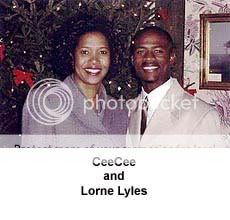
www.unitedheroes.com...
Here is the information about the Restoration House:RESTORATION HOUSE
THE HOUSE THAT “LOVE” BUILT
(Restoration House…..Redeem…..Restore…..Release
Contact Information:
Andrea Dean
P.O. Box 2375
Fort Pierce, FL 34954-2375
(561) 468-7900
Fax: (561) 468-4704
www.guardiansfornewfutures.org...
www.post-gazette.com...

She is survived by her husband, Lorne Lyles (31), and her sons Jerome Smith (16), Jevon Castrillo (6), Justin Lyles (11), and Jordan Lyles (9), along with her aunt Carrie Ross, who adopted CeeCee at the age of one week old, who raised her and called her a daughter, her aunt Mareya Schnieder, and other family.
She is not alleged. She was a daughter, a mom, a wife, a friend.
You can download the actual recording of her phone call here:
www.vaed.uscourts.gov...
[edit on 9-1-2008 by CaptainObvious]
I would like to introduce you to Cee Cee Lyles. An "alleged" flight attendant on Flight 93.
All I ask is that you look at the photos. Read what her husband says......read what her relatives say. Look at what she did for the community......

Mrs. Lyles husband, Lorne, a police officer, received a phone call that morning. She was surprisingly calm, he said, considering the screaming he heard in the background.
"Just hearing my wife saying she loved us through all that chaos on that plane is just embedded in my heart forever," he said.
www.unitedheroes.com...
CeeCee grew up in Fort Pierce and raised her sons on her own until she married Lorne in May 2000 and later moved to Fort Myers. Emulating her mother and aunts, she never took welfare, instead working two or three jobs while volunteering at Restoration House, a Christian women's shelter that two of her aunts founded in Fort Pierce.
"CeeCee was a role model, showing women they could make their own way without leeching off the system," said her aunt, Mareya Schneider. "In the last few years, she really dedicated herself to the Lord and she would use Scripture to explain that if you don't work, you don't eat."
Here is the information about the Restoration House:RESTORATION HOUSE
THE HOUSE THAT “LOVE” BUILT
(Restoration House…..Redeem…..Restore…..Release
Contact Information:
Andrea Dean
P.O. Box 2375
Fort Pierce, FL 34954-2375
(561) 468-7900
Fax: (561) 468-4704
www.guardiansfornewfutures.org...
www.post-gazette.com...

She is survived by her husband, Lorne Lyles (31), and her sons Jerome Smith (16), Jevon Castrillo (6), Justin Lyles (11), and Jordan Lyles (9), along with her aunt Carrie Ross, who adopted CeeCee at the age of one week old, who raised her and called her a daughter, her aunt Mareya Schnieder, and other family.
She is not alleged. She was a daughter, a mom, a wife, a friend.
You can download the actual recording of her phone call here:
www.vaed.uscourts.gov...
[edit on 9-1-2008 by CaptainObvious]
Here is another passenger. Her name is Christine Snyder.

She was 32, from Kailua, Hawaii, was an arborist for Outdoor Circle, a forestry organization. She had married her husband, Ian Pescaia, three months before the attack. Her family says, "She was outgoing, caring, loving and tried to make this world a better place. Christine was our angel — she is greatly missed."
From islenews.com, Friday, September 21, 2001:
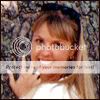
She is real too.

She was 32, from Kailua, Hawaii, was an arborist for Outdoor Circle, a forestry organization. She had married her husband, Ian Pescaia, three months before the attack. Her family says, "She was outgoing, caring, loving and tried to make this world a better place. Christine was our angel — she is greatly missed."
From islenews.com, Friday, September 21, 2001:
www.outdoorcircle.org...
Arborist remembered with education fund: A fund to grow minds has been established in memory of a woman who dedicated her life to keep Honolulu's trees growing. The Outdoor Circle this week created the Christine Snyder Tree Education Fund to teach people about the importance and proper care of trees. Snyder, 32, died aboard United Airlines flight 93 when it was hijacked and crashed in Pennsylvania on Sept. 11. She was attending a forestry conference in Washington, D.C., and was on her way home. Colleagues said Snyder was a dedicated defender of Hawaii's green spaces and an articulate activist when she needed to be. The Aloha Arborists Association and the American Society of Landscape Architects are also supporting the fund.

She is real too.
reply to post by CaptainObvious
What that states is that people, in the photos, were reported missing on or after 9/11/2001. That is all that can be done until human remains are validated and positively ID'd by consensus peer review.
There is no proof where people have gone. Hearsay, without corroborating peer review testing of remains and consensus, is not valid proof any alleged passengers were on any alleged Flight 93, or disappeared from alleged Flight 93,for which no positively ID'd parts have been peer reviewed and corroborated by peer consensus either.
When plane parts are collected from plane crashes, they are not given back to airlines, if at all, until they have been forensically, positively ID'd as attached to the plane with the same SN and airline number ID on the flight manifest. Evidence certainly is not thrown into trash company bins as if they are disposable trash not forensic evidence.
What that states is that people, in the photos, were reported missing on or after 9/11/2001. That is all that can be done until human remains are validated and positively ID'd by consensus peer review.
There is no proof where people have gone. Hearsay, without corroborating peer review testing of remains and consensus, is not valid proof any alleged passengers were on any alleged Flight 93, or disappeared from alleged Flight 93,for which no positively ID'd parts have been peer reviewed and corroborated by peer consensus either.
When plane parts are collected from plane crashes, they are not given back to airlines, if at all, until they have been forensically, positively ID'd as attached to the plane with the same SN and airline number ID on the flight manifest. Evidence certainly is not thrown into trash company bins as if they are disposable trash not forensic evidence.
Originally posted by OrionStars
What that states is that people, in the photos, were reported missing on or after 9/11/2001. That is all that can be done until human remains are validated and positively ID'd by consensus peer review.
Why are you lying? Please show me the missing person report. I am trying my best to be civil. You need to stop lying. Please show me ONE missing persons report from a passenger or crew member of FLight 93 or retract this statement.
There is no proof where people have gone. Hearsay, without corroborating peer review testing of remains and consensus, is not valid proof any alleged passengers were on any alleged Flight 93, or disappeared from alleged Flight 93,for which no positively ID'd parts have been peer reviewed and corroborated by peer consensus either.
Why are you lying? There is proof. Their DNA or other remains and personal items were found at the crash site. It was analyized and confirmed. Lets stick to the passengers first. We can get to the aircraft second.
I have listed on several occasions now the several different people that were in charge of the CREWS of specialists involved in the examination and identification of the remains found at the site.
I will list them once more. IF you don't beleive me, sorry Orion but it will be up to you to contact them to see what steps they took in the identification process.
Paul Sledzik, Curator Armed Forces Institute of Pathology National Museum of Health and Medicine
Leader of flight 93 Disaster Mortuary (Team DMORT)
Email: [email protected]
On Sept. 13, Paul Sledzik, curator of anatomical collections at the National Museum of Health and Medicine of the Armed Forces Institute of Pathology (AFIP), was asked by the U.S. Department of Health and Human Service's Office of Emergency Preparedness to command the Region III Disaster Mortuary Operational Response Team (DMORT) in providing victim identification services for the UA Flight 93 crash. Sledzik has been team commander of Region III DMORT since 1997.
As part of the National Disaster Medical System, DMORT is composed of private citizens and federal employees who are asked to provide forensic, mortuary, and family support services following disasters. The teams (there are 10 throughout the nation) are made up of forensic scientists, medicolegal investigators, mortuary officers, logistics and administrative support personnel, and others.
In addition to Sledzik, Lenore Barbian, Ph.D., the assistant curator of anatomical collections at the museum and a DMORT team member, was also asked to respond. Barbian and Sledzik spent the next two weeks in Somerset, Pa. The main focus of their work was to support the local coroner in identifying the victims of the crash and working with the FBI collecting evidence to be used when the terrorists are brought to justice.
The DMORT team organized a morgue, set up the morgue operation, interviewed victim families, and collected antemortem and postmortem information. The morgue facility was located in the National Guard Armory outside Somerset, Pa. With the FBI as the lead agency in the investigation, access to the morgue was strictly controlled.
Sledzik sees the combined DMORT and AFIP response to such incidents as a great benefit to the families of those killed in disasters. As part of a package of federal resources, DMORT and AFIP have worked together in previous incidents, particularly in the area of DNA identification.
"In my estimation, the AFIP managed two of the three incidents following the Sept. 11 attacks: the Pentagon crash and the Somerset crash. My AFIP credentials opened more doors during the activation than my DMORT association. Medicolegal disaster responders respect the AFIP name," Sledzik said.
In fact, the Office of the Armed Forces Medical Examiner provided forensic pathology consultation for the Pennsylvania crash, and five staff members of the Armed Forces DNA Identification Laboratory collected DNA samples in the Somerset morgue.
Sledzik and Barbian, physical anthropologists on staff of the NMHM/AFIP, oversee a collection of human medical and pathological specimens. They provide forensic anthropology consultation to several local and federal agencies and teach an annual AFIP course in forensic anthropology.
"The methods of interpreting the biological aspects of the human skeleton are similar, whether you are looking at a Civil War soldier or a recent disaster victim," said Barbian.
Then there was:
Dr. Dennis C. Dirkmaat, Chief Scientific Advisor to Somerset County Coroner's office in the flight 93 investigation; Director, Applied Forensic Sciences Department, Mercyhurst College, 501 E. 38th St. Erie, PA 16546 Email: [email protected]
Dr. Dennis Dirkmaat, a DMORT member and forensic anthropologist from Mercyhurst College in Erie, said the remains were "extremely fragmented" after the crash, in which the airliner hit the ground at hundreds of miles per hour.
Still, Dirkmaat said, DMORT workers were attempting "to document every piece of tissue," no matter how small. By walking or crawling over the crash site and by sifting dirt through mesh screens, DMORT workers hoped to recover tiny samples that, despite their size, could be analyzed and identified.
Once the remains were recovered, they were sent to a temporary morgue four miles away in a Pennsylvania National Guard armory in Friedens. There, more DMORT workers analyzed the remains utilizing equipment shipped from Dallas.
Fingerprint specialists examined tissue and dentists examined teeth, fillings or wire from dental braces that had been collected for comparison with X-rays and other records obtained from relatives of the crash victims. Anthropologists and X-ray technicians have done the same with bones, looking for evidence of healed fractures, past injuries or surgeries.
If remains still couldn't be identified, DMORT workers sent samples to the DNA laboratory in Maryland to be matched with the genetic markers of those who died.
That can be done by obtaining blood samples from relatives or by obtaining DNA from strands of hair left in combs, from saliva on toothbrushes or stamps, even from nearly invisible bits of blood or tissue or a razor blade.
www.post-gazette.com...
If some people do not understand why I do not trust the FBI lab as a sole source of DNA ID, particularly concerning 9/11/2001, the following are just
a few of many specific reasons why:
www.crimemagazine.com...
"Tainting Evidence:
Inside the Scandals at the FBI Crime Lab
by John F. Kelly and Phillip K. Wearne"
www.crimelabreport.com...
[i]"In the case against Bryan Rose, defense attorneys, without objection from the state, introduced a 220 page review of the FBI's highly publicized misidentification of a Muslim lawyer, Brandon Mayfield, in the investigation of the 2004 Madrid train bombing that killed 191 people. Mayfield, who was living in Oregon, was arrested by the FBI even after Spanish investigators disagreed with the fingerprint match.
Faced with compelling evidence of a significant error in a major terrorism case, Judge Souder was understandably suspicious of testimony offered by an FBI expert who claimed that the comparison of fingerprints has no potential for error. The methodology, he testified, "is infallible"."
Since I am quite familiar with genetics procedures, I know all too well that in the right hands of people of integrity, DNA ID can be assured. In the wrong hands of disreputable people, it can be a deliberately tainted weapon to wield against the innocent and the truth.
www.crimemagazine.com...
"Tainting Evidence:
Inside the Scandals at the FBI Crime Lab
by John F. Kelly and Phillip K. Wearne"
www.crimelabreport.com...
[i]"In the case against Bryan Rose, defense attorneys, without objection from the state, introduced a 220 page review of the FBI's highly publicized misidentification of a Muslim lawyer, Brandon Mayfield, in the investigation of the 2004 Madrid train bombing that killed 191 people. Mayfield, who was living in Oregon, was arrested by the FBI even after Spanish investigators disagreed with the fingerprint match.
Faced with compelling evidence of a significant error in a major terrorism case, Judge Souder was understandably suspicious of testimony offered by an FBI expert who claimed that the comparison of fingerprints has no potential for error. The methodology, he testified, "is infallible"."
Since I am quite familiar with genetics procedures, I know all too well that in the right hands of people of integrity, DNA ID can be assured. In the wrong hands of disreputable people, it can be a deliberately tainted weapon to wield against the innocent and the truth.
Originally posted by OrionStars
reply to post by COOL HAND
You are telling me to make your case for you. I am not going to do that. That list is what you are using as "evidence". You have to explain how it works. It is not your opponent's responsibility to explain what you call "evidence" means.
OS
Proving that those where precise altitude measurements with no CEP would bolster your case, not mine.
Of course, if you can't produce that kind of evidence than at least be man (or woman) enough to admit that.
new topics
-
Does the Trump win mean No More Taylor Swift??
2024 Elections: 1 hours ago -
Trump-appointed judge blocks Biden administration overtime rule
Social Issues and Civil Unrest: 3 hours ago -
Don't cry do Cryo instead
General Chit Chat: 8 hours ago -
Tariffs all around, Except for ...
Dreams & Predictions: 10 hours ago
top topics
-
Don't cry do Cryo instead
General Chit Chat: 8 hours ago, 10 flags -
Gen Flynn's Sister and her cohort blow the whistle on DHS/CBP involvement in child trafficking.
Whistle Blowers and Leaked Documents: 15 hours ago, 8 flags -
Does the Trump win mean No More Taylor Swift??
2024 Elections: 1 hours ago, 6 flags -
Tariffs all around, Except for ...
Dreams & Predictions: 10 hours ago, 5 flags -
Trump-appointed judge blocks Biden administration overtime rule
Social Issues and Civil Unrest: 3 hours ago, 5 flags
active topics
-
WATCH LIVE: US Congress hearing on UFOs, unidentified anomalous phenomena
Aliens and UFOs • 88 • : Cvastar -
Trump picks Gov. Kristi Noem to serve as homeland security secretary
2024 Elections • 46 • : Solvedit -
Does the Trump win mean No More Taylor Swift??
2024 Elections • 6 • : Dandandat3 -
Mike Tyson returns 11-15-24
World Sports • 57 • : DontTreadOnMe -
Don't cry do Cryo instead
General Chit Chat • 6 • : underpass61 -
Tariffs all around, Except for ...
Dreams & Predictions • 15 • : worldstarcountry -
Trump-appointed judge blocks Biden administration overtime rule
Social Issues and Civil Unrest • 2 • : Dandandat3 -
Trump sues media outlets -- 10 Billion Dollar lawsuit
US Political Madness • 45 • : Oldcarpy2 -
Anybody else using Pomodoro time management technique?
General Chit Chat • 10 • : mysterioustranger -
How can you defend yourself when the police will not tell you what you did?
Posse Comitatus • 86 • : ADVISOR


